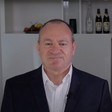
Private Equity Deal Structuring

Gavin Ryan
25 years: Private equity & banking
A private equity investor is looking to deploy flexibility in deal structuring, to give him a competitive advantage over other, more constrained investors. Gavin will discuss the extent of this flexibility by describing the approach of private equity investors and some of the financial and non financial instruments included in a deal.
A private equity investor is looking to deploy flexibility in deal structuring, to give him a competitive advantage over other, more constrained investors. Gavin will discuss the extent of this flexibility by describing the approach of private equity investors and some of the financial and non financial instruments included in a deal.
Subscribe to watch
Access this and all of the content on our platform by signing up for a 7-day free trial.

Private Equity Deal Structuring
10 mins
Key learning objectives:
Outline the approach of PE investors
Understand the difference between financial and non-financial instruments.
Identify the main obstacles to successful deals
Overview:
A private equity investor is looking to deploy flexibility in deal structuring, because it will give him a competitive advantage over other, more constrained investors. We can think of a private equity deal structure as being made up from components of a menu of both financial and non financial instruments. We have ordinary shares, which can be either a small minority, an influential minority; or a majority. We have preference shares, which are much more customisable than ordinary shares. Non financial instruments include board seats, veto rights and ratchet mechanisms. Reporting requirements and enforcement mechanisms are also important.
Subscribe to watch
Access this and all of the content on our platform by signing up for a 7-day free trial.
What is the approach of private equity investors?
A private equity investor sees an investment as a partnership with other shareholders and management, which needs to be “win-win” to be sustainable. A private equity investor is looking to deploy flexibility in deal structuring, because it will give him a competitive advantage over other, more constrained investors. A private equity investor is looking to align management’s interests with their objective of increasing the value of the company.Which financial and non financial instruments can exist in a private equity deal structure?
- A private equity investor is able to make use of customised financial instruments such as preference shares, or use more than one financial instrument in a transaction.
- A seat on the board of directors will give the private equity investor influence over company decisions he may not otherwise have.
- Veto rights means there will be a list of company decisions that cannot be made without the approval of the private equity investor, even if he is in a minority in the company.
- A ratchet mechanism is an arrangement according to which, if there is a shortfall, the private equity investor gets compensated proportionately.
What are some obstacles to deals?
Obstacles include high valuation expectations by sellers, reluctance to give up control by founders, image concerns, lack of commitment to exit, difficulty in understanding complex deal structures. A private equity fund manager needs good communication skills to build trust and acceptance of deal complexities. This is even more important in Emerging Markets, where there may be less familiarity with private equity.Subscribe to watch
Access this and all of the content on our platform by signing up for a 7-day free trial.

Gavin Ryan
There are no available Videos from "Gavin Ryan"



























